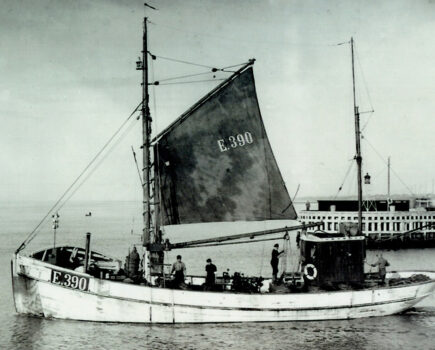Alvin Forster, deputy director of loss prevention at the North Group, discusses the essential role of a watch alarm in fishing vessel safety – but the key is to make sure you are using it properly.
Sunderland Marine insures fishing vessels all around the world, and everywhere has one thing in common – fishermen get tired.
Whether you fish in Australia, New Zealand, the USA or the UK, the hours are long, weather is volatile and the work is physical. Fatigue is a serious risk. If fatigue is not properly managed, the chance of falling asleep while on watch in the wheelhouse is high.

Alvin Forster, deputy director of
loss prevention at the North Group.
Unfortunately, there have been a number of fishing vessel casualties that led directly from falling asleep at the wheel – most commonly groundings.
Tackling fatigue is a big subject on its own. It’s not just about feeling sleepy after a hard couple of days – the cumulative effects are just as damaging.
But an effective means of stopping you dropping off at the wheel is the watch alarm. It’s important to remember that a watch alarm does not prevent tiredness or alleviate fatigue, but the findings of a number of fishing vessel incident investigations have noted that if used properly, it can prevent a catastrophic collision or grounding.
Different rules apply to different parts of the world, so it might not be compulsory to have a watch alarm fitted to your vessel. It could, however, prove to be a worthy investment, particularly on those vessels where there is only one person on watch during the night, and the conditions are conducive to sleepiness.
Effective operation
However, just having a watch alarm installed is no guarantee of safety. Clearly, it has to be switched on, and set up with the appropriate time interval.
For example, in 2017 an Alaskan fishing vessel ran aground when the skipper fell asleep. The watch alarm was operational, but the skipper failed to reset the interval to three minutes – as was usual during the night – from 10 minutes, which was the interval used during daylight fishing.
Location of the watch alarm is important too, as highlighted in the 2010 UK MAIB investigation report on the crabber Kerloch. The report considered that the watch alarm was ineffective as the ‘silence’ button was too close to the skipper’s chair – perhaps like a snooze button on an alarm clock. If the alarm is activated, it should mean that the person on watch has to physically get up and accept it.
Our claims team see all too many grounding incidents which could have been averted if there was a fully operational watch alarm. It’s tempting to say that the takeaway messages from all this are: if you don’t have a watch alarm, think about fitting one, if you have one already, make sure it’s switched on, and if it is switched on, make sure the interval is appropriate and the crew know how to use it.
But this shouldn’t detract from the principle of ‘prevention is better than cure’ – managing fatigue in the first instance is key.
Watch alarms are your safety net.









